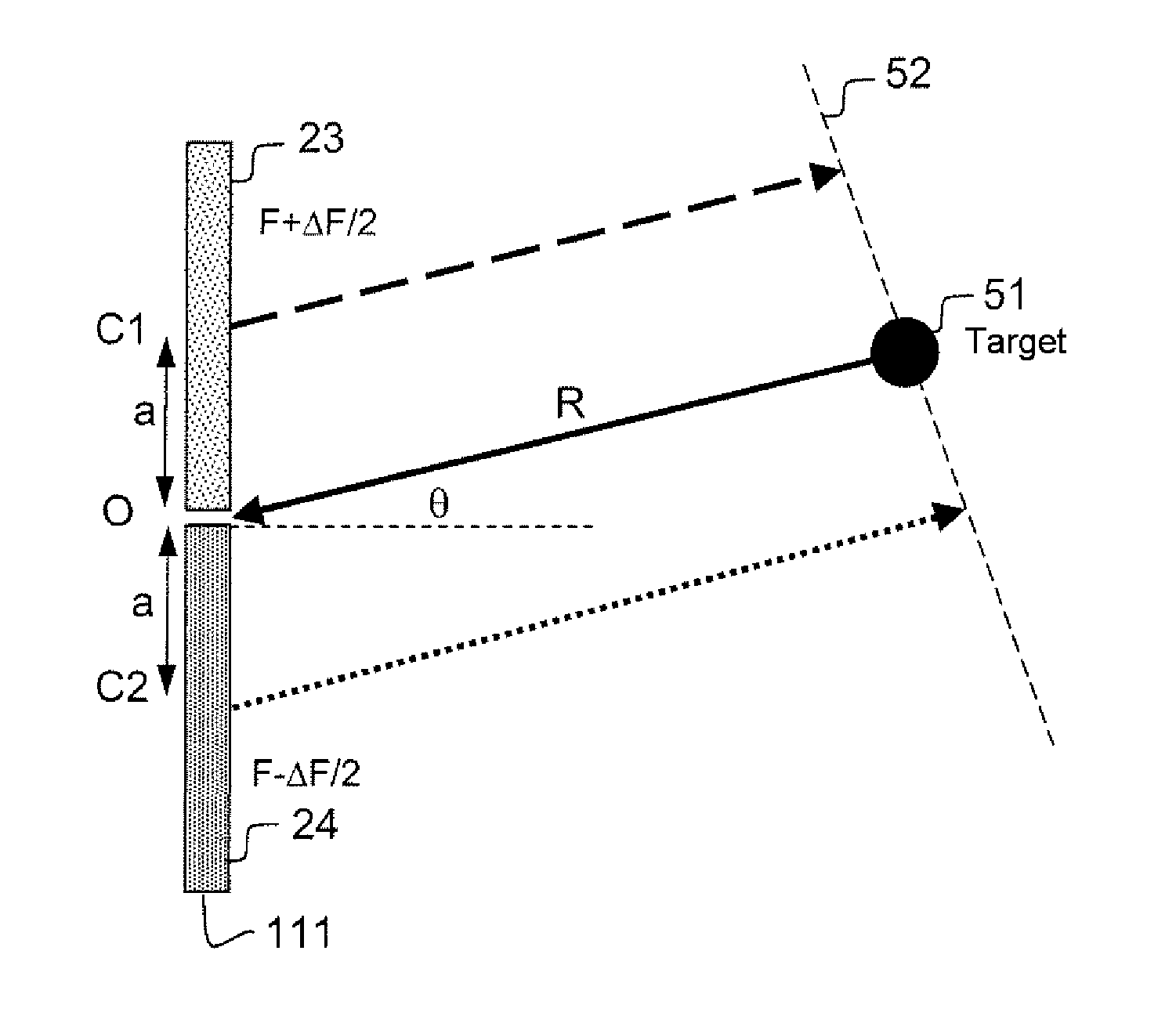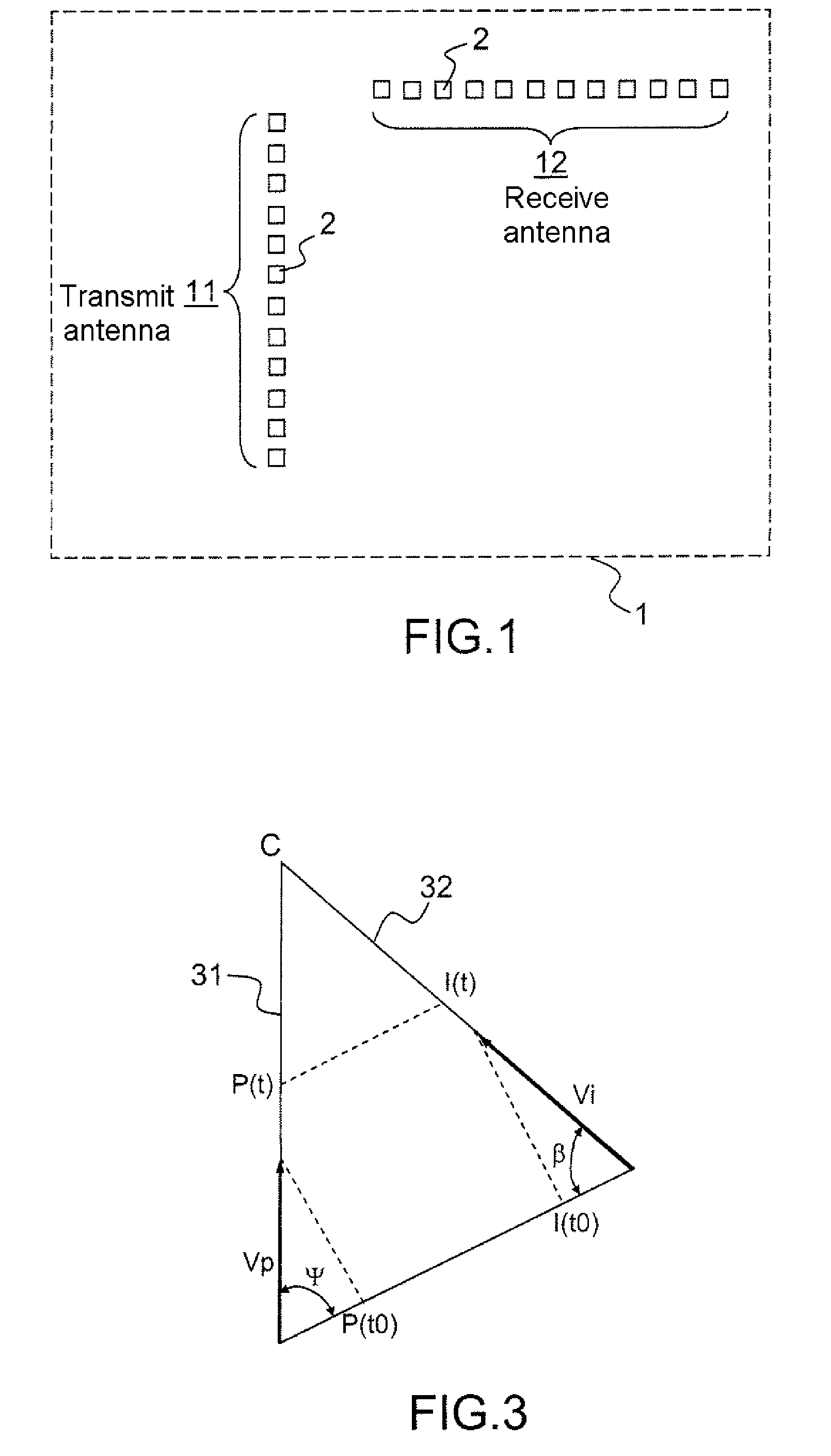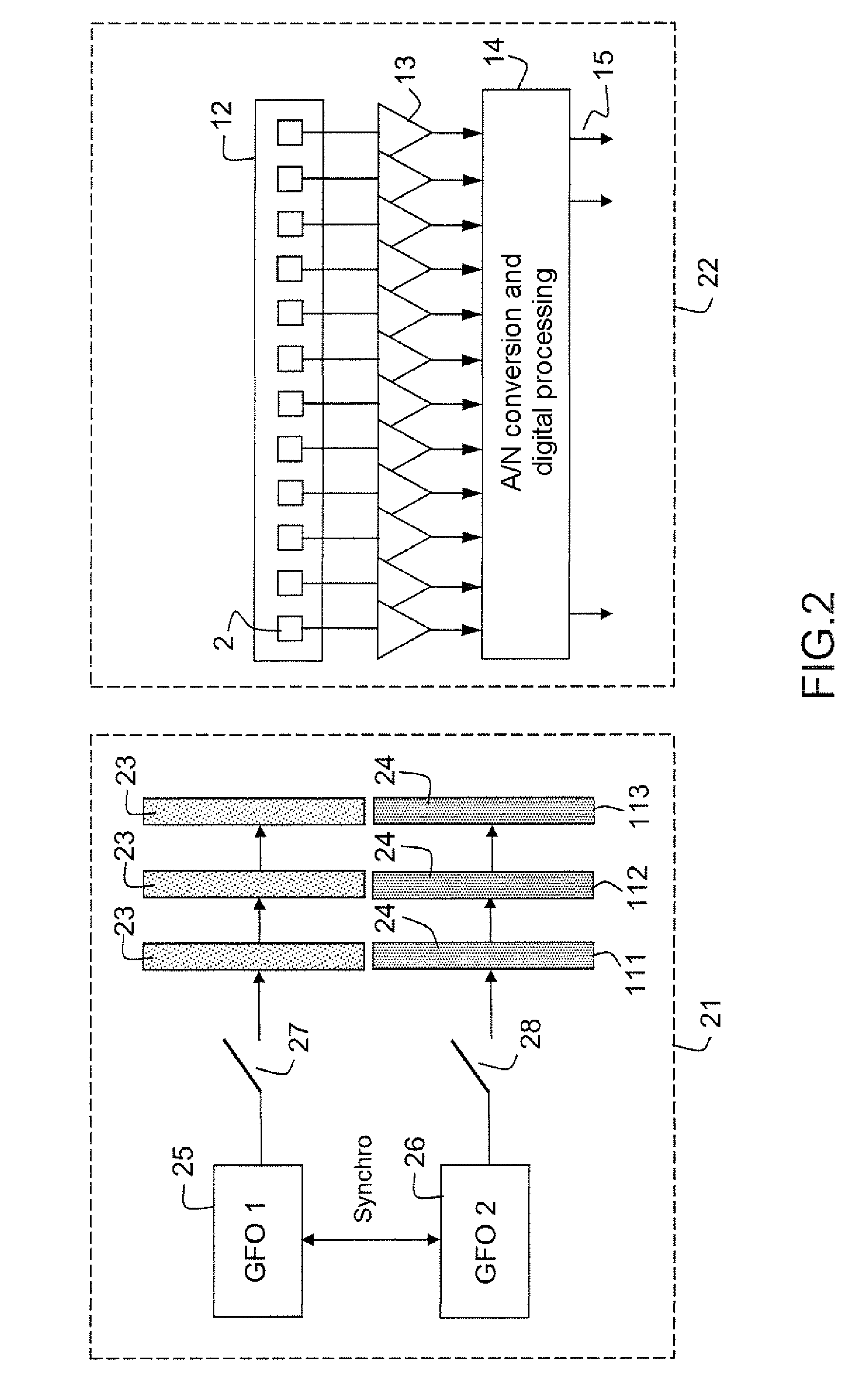Airborne radar having a wide angular coverage, notably for the sense-and-avoid function
a radar and wide angular coverage technology, applied in the direction of reradiation, measurement devices, instruments, etc., can solve the problems of not meeting the requirements of measurement replenishment rate and angular extent, no radar device meets all these requirements, and extremely tight electronics volume and surface available for antennas
- Summary
- Abstract
- Description
- Claims
- Application Information
AI Technical Summary
Benefits of technology
Problems solved by technology
Method used
Image
Examples
case 1
[0237]An arbitrary distance, for example 2000m, is assigned to the target, this distance corresponding to the lower limit of the domain. The state vector is set as follows, the numerical values being given by way of example and S / N representing the signal-to-noise ratio:
[0238](RRVUnambiguousdistance=2000mS / Na=0AnglesAmbiguousdistance1=2000mS / Nb=0Qualityindex=0Ambiguousdistance2=2000mS / Nc=0Eventcounter=1Ambiguousdistance3=2000mS / Nd=0)
[0239]The track remains “internal” to the radar and is not communicated to the navigation system.
[0240]If, during the scan cycle for the next elevation line, the same case occurs again, i.e.:
[0241]either the target is not detected again (during the phase in which the ΔF is small) nor is it detected at least twice during the distance measurement phase (during the phase in which the |ΔF| values are high), during the following observation sequence of the same elevation line (i.e. approximately one second later)...
case 2
[0244]This case provides a distance measurement, but the distance is ambiguous (because of the 2π ambiguity in the differential phase) since, during the detection sequence, the angle and the RRV were measured unambiguously. Applying equation (14′) leads to the following distance estimate:
[0245]R=c2ΔF[2asinθλ-ΔϕF2π]modc2ΔF(17)
[0246]For a ΔF value of 50 kHz, the modulo term is equal to 3000 m. Accepting that three ambiguities are contained in the distance domain of the “long range” waveform, the state vector is set as follows:
[0247](RRVUnambiguousdistance=RSNRAnglesAmbiguousdistance1=R+c2ΔF0Qualityindex=1Ambiguousdistance2=R+2c2ΔF0Eventcounter=1Ambiguousdistance3=R+3c2ΔF0)
[0248]The SNR of the three non-detection cycles is set to zero. In practice, four estimators are opened with the four distance assumptions. It is possible, within a safety principle, to transmit a prewarning to the navigation system relating to the track corres...
case 3
[0249]This case provides an unambiguous distance measurement. It is sufficient for there to be two valid detections in four and to have a judiciously chosen set of ΔF values. The possible principles for resolving the distance ambiguity are discussed in the next paragraph.
[0250]An example of how the distance ambiguity is resolved, in a preferential solution in tracking initialization phase, is given below for a simplified case, ignoring the ambiguity in the differential phase. Given the measurement of the target angle θ coming from the detection sequence, equation (14′) shows that each differential phase measurement allows an estimate of the distance modulo the distance ambiguity.
[0251]If the situation is limited to the first ambiguity, the following equations may be written, for example in the case of two valid differential phase measurements:
[0252]Ra=c2ΔFa[asinθλ-ΔϕFa2π]Rb=c2ΔFb[asinθλ-ΔϕFb2π]
[0253]With two measurements, it is possible to calculate, for exampl...
PUM
 Login to View More
Login to View More Abstract
Description
Claims
Application Information
 Login to View More
Login to View More - R&D
- Intellectual Property
- Life Sciences
- Materials
- Tech Scout
- Unparalleled Data Quality
- Higher Quality Content
- 60% Fewer Hallucinations
Browse by: Latest US Patents, China's latest patents, Technical Efficacy Thesaurus, Application Domain, Technology Topic, Popular Technical Reports.
© 2025 PatSnap. All rights reserved.Legal|Privacy policy|Modern Slavery Act Transparency Statement|Sitemap|About US| Contact US: help@patsnap.com



